Barred Pargo, Hoplopagrus guentherii
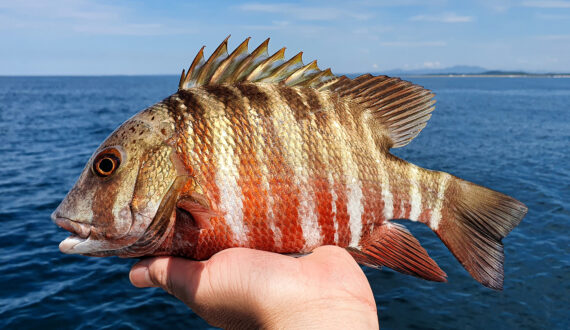 Barred Pargo, Hoplopagrus guentherii. Fish caught from coastal waters off Mazatlán, Sinaloa, October 2021. Length: 28 cm (11 inches). Catch, photograph and identification courtesy of Bart, The Netherlands (worldangler.eu).
Barred Pargo, Hoplopagrus guentherii. Fish caught from coastal waters off Mazatlán, Sinaloa, October 2021. Length: 28 cm (11 inches). Catch, photograph and identification courtesy of Bart, The Netherlands (worldangler.eu).
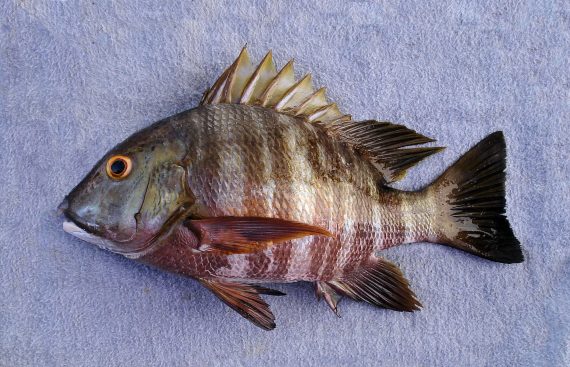 Barred Pargo, Hoplopagrus guentherii. Fish caught off the beach at Km 21, Cabo Real, Baja California Sur, November 2008. Length: 35 cm (14 inches).
Barred Pargo, Hoplopagrus guentherii. Fish caught off the beach at Km 21, Cabo Real, Baja California Sur, November 2008. Length: 35 cm (14 inches).
 Barred Pargo, Hoplopagrus guentherii. Fish caught from within Magdalena Bay, Baja California Sur, February. Length: 40 cm (14 inches). Catch, photograph and identification courtesy of Brad Murakami, Surrey, British Columbia, Canada.
Barred Pargo, Hoplopagrus guentherii. Fish caught from within Magdalena Bay, Baja California Sur, February. Length: 40 cm (14 inches). Catch, photograph and identification courtesy of Brad Murakami, Surrey, British Columbia, Canada.
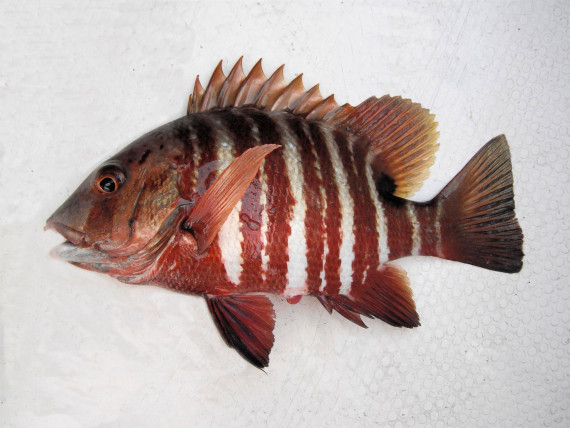 Barred Pargo, Hoplopagrus guentherii. Fish caught from coastal waters off Mazatlán, Sinaloa, April 2015. Length: 38 cm (15 inches). Catch and photograph courtesy of Michael Verdirame, Markham, Ontario, Canada.
Barred Pargo, Hoplopagrus guentherii. Fish caught from coastal waters off Mazatlán, Sinaloa, April 2015. Length: 38 cm (15 inches). Catch and photograph courtesy of Michael Verdirame, Markham, Ontario, Canada.
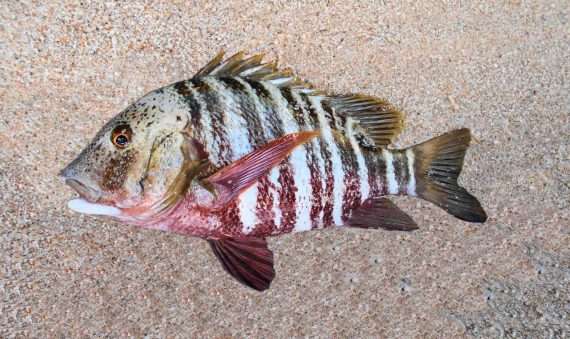 Barred Pargo, Hoplopagrus guentherii. Fish caught off the beach at Km 21, Cabo Real, Baja California Sur, January 2020. Length: 43 cm (17 inches).
Barred Pargo, Hoplopagrus guentherii. Fish caught off the beach at Km 21, Cabo Real, Baja California Sur, January 2020. Length: 43 cm (17 inches).
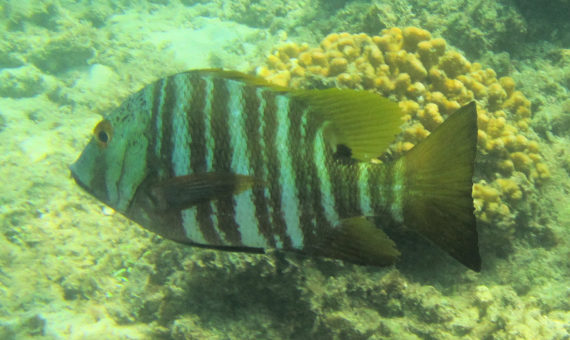 Barred Pargo, Hoplopagrus guentherii. Underwater photograph taken in coastal waters of the greater Los Cabos area, Baja California Sur, May 2018. Photograph courtesy of Bob Hillis, Ivins, Utah.
Barred Pargo, Hoplopagrus guentherii. Underwater photograph taken in coastal waters of the greater Los Cabos area, Baja California Sur, May 2018. Photograph courtesy of Bob Hillis, Ivins, Utah.
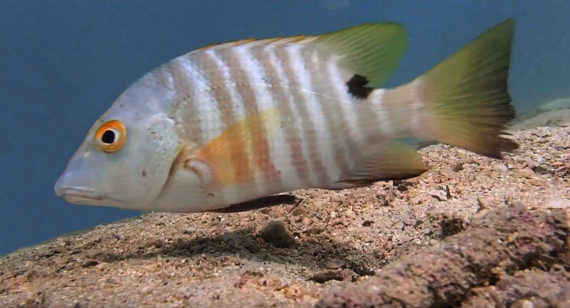 Barred Pargo, Hoplopagrus guentherii. Underwater photograph taken in Zihuantanejo Bay, Guerrero, March 2019. Photograph courtesy of Ron Woheau, Zihuantanejo.
Barred Pargo, Hoplopagrus guentherii. Underwater photograph taken in Zihuantanejo Bay, Guerrero, March 2019. Photograph courtesy of Ron Woheau, Zihuantanejo.
The Barred Pargo, Hoplopagrus guentherii, is a member of the Snapper or Lutjanidae Family, that is also known as the Mexican Barred Pargo and in Mexico as pargo coconaco or just coconaco. Globally, there is only one species in the genus Hoplopagrus, this species which is found in Mexican waters of the Pacific Ocean.
The Barred Pargo has a deep moderately compressed body that are the widest of the snappers with a depth that is 44% to 46% of body length. They have a reddish-brown coloration with a brown head, a white chin, and six alternating wide and narrow horizontal white bars on their sides. These bars are quite pronounced upon collection but fade quickly over time. Juveniles have closely paired bars on their sides and a black spot at the base of their dorsal rays. Their anal fin has 3 spines, the second is strong, and 9 rays; their caudal fin is straight; their dorsal fin has 10 spines and 14 rays; and, their pectoral fins have 16 to 17 rays and are long and extend well past the anal fin origin. They have 11 to 15 gill rakers on the lower arch. They are covered with scales.
The Barred Pargo is found within heavy rock structures and caves at depths up to 100 m (330 feet). They reach a maximum of 92 cm (3 feet 0 inches). in length. They are nocturnal predators consuming crustaceans and small fish. They shelter in rocky reefs and caves during the day. The Barred Pargo is poorly studied with very limited information available about their lifestyle and behavioral patterns including specific details on age, growth, longevity, movement patterns, diet, habitat use, and reproduction.
The Barred Pargo is a resident of Mexican waters of the Pacific but has a limited range being found from Magdalena Bay, Baja California Sur, southward along the southwest coast of Baja, in the southern two-thirds of the Sea of Cortez, and along the coast of the mainland south to Guatemala.
Due to its unique markings, the Barred Pargo is a very easy fish to identify and cannot be confused with any other species.
From a conservation perspective the Barred Pargo is currently considered to be of Least Concern with stable, widely distributed populations. They are not considered to be an esteemed food fish but are common in the local fish markets in the greater Los Cabos area of Baja California Sur. They are normally caught close to shore and are accessible from the beach predawn, however, they are rare and seldom caught by hook and line. Catching a large fish is a great feat due to the rocky structures and caves they inhabit. They are targeted by spear fishermen and are not very mobile during daylight hours thus becomes easy prey.